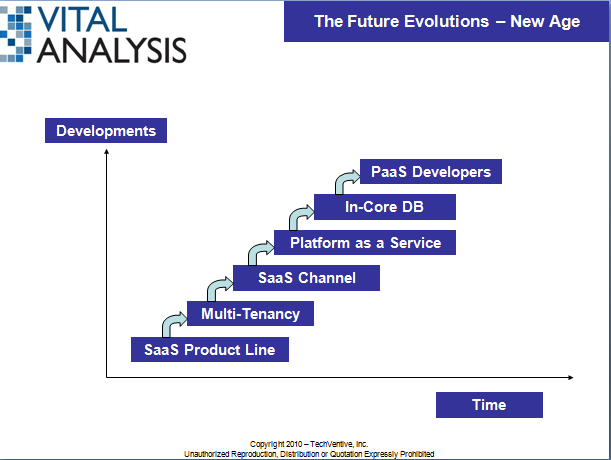Why these ecosystems are SO important [part 4]

Why is a PaaS ecosystem so important, especially to ERP and other application software firms?
Application software buyers continue to evolve, learn and refine their shopping skills and business needs. They are, often by virtue of the effort they put into these deals, quite savvy and up-to-date. They know the score and they reward the vendors with the most appropriate, most current products.
A few years back, customers were looking at on-premise apps. Then, they started to consider cloud application software. Whether it was called SaaS (software-as-a-service) or cloud, they looked at and started to buy cloud solutions for office automation (e.g., Google Apps, Zoho, Microsoft Office 365), HR (e.g., Workday, Taleo, Silkroad) and CRM (e.g., Salesforce). Some even found business specific solutions in the cloud (e.g., Plex Online and Rootstock for Manufacturing).The move to cloud was on its way.
But in the rapidly evolving cloud world, future waves of buyers started to find lots of cloud choices. So, these buyers do what all rational, logical buyers do – they got smarter and refined their solution choices. Today’s SaaS (software-as-a-service) cloud apps buyer knows they want a SaaS product. With so many out there (and more to come), they need a way to differentiate these. So, these buyers thin the herd a bit and look at only multi-tenant SaaS applications. And, sometimes, that means they need another differentiator. They look at vendors with a PaaS (platform-as-a-service).Today, the truly discerning buyers will also want to look at apps with a PaaS and a vibrant ecosystem to go along with it.
Competition in the application space will require vendors continue to innovate and improve their value proposition. Logical buyers will seek the products that offer the best value for them. It’s simple economics and market dynamics.
The PaaS ecosystem will become important to vendors and not just to software buyers. To vendors, the ecosystem will become a major differentiator for a few vendors that can build one out and get wide market adoption of their platform. For other vendors, their participation in someone else’s ecosystem means that they can take advantage of other firms’ selling and distribution efforts. These ecosystems are full of integrators, product enhancers, resellers, add-on product builders, other major software firms, vertical solutions and more. When someone in these other firms makes a sale, it increases the probability that they will also trigger sales for other members in the ecosystem, too.
But the ecosystem is really important as it can fuel non-linear growth. When a traditional software vendor wants to grow, growth often occurs at a linear rate. This is because the company cannot develop new products beyond what its cash flow can support. R&D takes money and limited R&D funds artificially constrain how quickly the company creates new products. Moreover, the company can only grow other functions, like Sales, based on its available cash. SaaS companies really feel the cash constraint as they don’t get those huge upfront license fees. Many firms are instead getting monthly usage payments. Their cash comes in lots of smaller dosages over time.
In an ecosystem world, a software vendor can use the scale of others in the ecosystem. Third parties will recommend and may even implement a vendor’s products. The vendor doesn’t even need to sell these products. They can scale without pain. Likewise, they can start selling products while others round out the apps for them. The best PaaS technical environments permit users and third parties to create and reuse product extensions and enhancements. The advantage to a software firm is that they don’t have to do all of their product’s R&D work. They can rely on the ecosystem participants to build out additional vertical and horizontal capabilities. In the PaaS ecosystem world, Sales can scale big-time without making massive and time-intensive investments in people, Sales, Marketing and R&D.
“Does every ERP application vendor need to have its own PaaS ecosystem?” – No. Besides the market won’t tolerate more than a few successful ones anyway. Instead, vendors may want to look at which ecosystem(s) they will play in. RootStock already co-exists in both the NetSuite and Force.com ecosystems.
“Is there risk with being part of another firm’s ecosystem?” – Yes. The PaaS ecosystem creator has a vested interest in growing the ecosystem. They won’t give any third party applications firm an exclusive as this limits the growth of the ecosystem. Some PaaS creators may even want to develop their own products to supplant those of its early ecosystem participants. For this reason, your apps firm must insist on seeing the product road map of the ecosystem creator before committing to this space.
Next: PaaS and the ERP Planks
